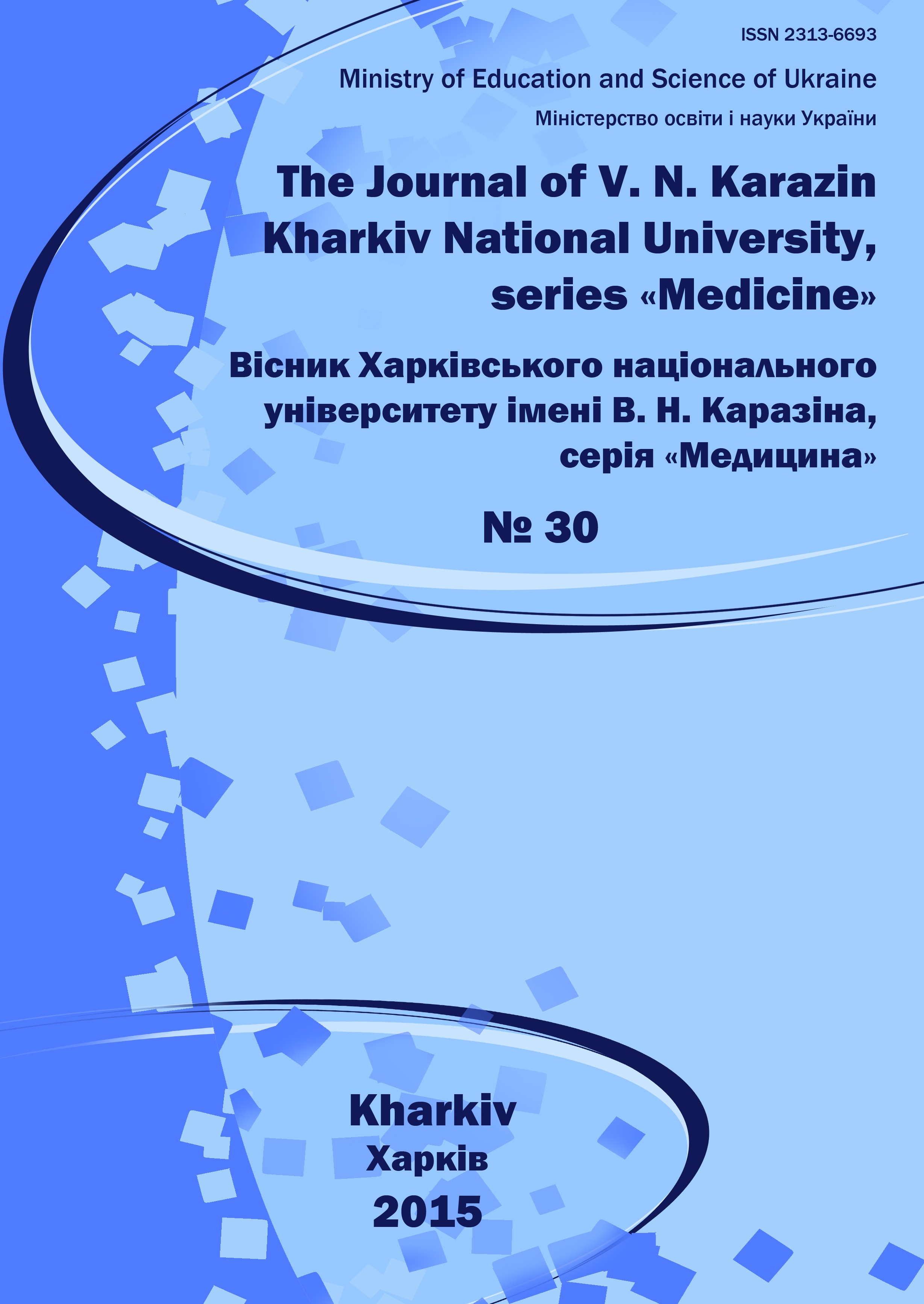ROLE OF GLYCAEMIA LEVEL IN THE DEVELOPMENT OF INTERSTITIAL COLLAGEN IN PATIENTS WITH CORONARY HEART DISEASE AND TYPE 2 DIABETES
Анотація
A role of blood glucose levels in the development of interstitial collagen has been studied in 84 patients (53 women and 31 men, average age 60 ± 2.4 years) with coronary heart disease (CHD). All patients were divided into twocomparable groups: a study group including patients with coronary heart disease andtype 2 diabetes mellitus (DM) and a control group consisting of patients with coronary heart disease without DM. All patients received standard medical therapy as recommended by the European Society of Cardiology. The level of blood glucose in both groups was assessed by the standard technique, a degree of interstitial collagen volume fraction (ICVF) was measured using the formula of J. Shirani et al. The data were processed by parametric and nonparametric statistical methods. It has been proved that hyperglycemia in type 2 diabetes contributes to the development of ICVF, the degree of which increases with the rise of blood glucose level. A high level ofICVF in patients with coronary heart disease and diabetes type 2 can be a predictor of myocardial dyssynchrony development and heart failure progression, therefore, a close monitoring and timely correction of changes of blood glucose levelsare recommended to prevent the complication development. ICVF evaluation should become a routine diagnostic method in all patients with type 2 diabetes.Завантаження
Посилання
Heidenreich P.A. Forecasting the Future of Cardiovascular Disease in the United States A Policy Statement From the American Heart Association / J. G. Trogdon, O. A. Khavjou // Circulation. - 2011. – № 123. – P. 933–944.
American Diabetes Association. Diagnosis and classification of diabetes mellitus / American Diabetes Association // Diabetes Care. – 2010. – № 33. – P. 62–69.
Miki T. Diabetic cardiomyopathy: pathophysiology and clinical features / T. Miki, S. Yuda, H. Kouzu, T. Miura // Heart Failure Reviews. – 2013. – № 18 (2). – P. 149–166.
Belenkov U. N. Lechenie cerdechnoy nedoststochnosty v XXI veke: dostyjenie, voprosy I uroki dokazatelnoy mediciny/ U. N. Belenkov, V. U. Mareev // Kardiologia. – 2013. – № 2. – P. 6–16.
Shabalin V. N. Diagnostic markers in the structures of human biological liquids / V. N. Shabalin, S. N. Shatokhina // Singapore med. J. – 2007. – Vol. 48. – P. 440–447.
Takawale A. Extracellular matrix communication and turnover in cardiac physiology and pathology / A. Takawale, S. S. Sakamuri, Z. Kassiri // Compr Physiol. – 2015. – № 5 (2). – P. 687–719.
Huxley R. Excess risk of fatal coronary heart disease associated with diabetes in men and women: meta-analysis of 37 prospective cohort studies / R. Huxley, F. Barzi // BMJ. – 2006. – Vol. 332, № 7533. – P. 73–78.
Shirani J. Usefulness of the Electrocar diagram and Echocar diagram in predictingtheamount of inter stitialmyocardialcjllagen in endomyocardial biopsy specimens of patients with chronic heart failure/ J. Shirani, R. Pick, Y. Quo // Am. J. Cardiol. – 1992. – № 69. – P. 1502.
McMurray J. J. ESC guidelines for the diagnosis and treatment of acute and chronic heart failure 2012: The Task Force for the Diagnosis and Treatment of Acute and Chronic Heart Failure 2012 of the European Society of Cardiology. Developed in collaboration with the Heart Failure Association (HFA) of the ESC / J. J. McMurray, S. Adamopoulos, S. D. Anker [et al.] // Eur J Heart Fail. – 2012. - № 14 (8). - P. 803–869.
Montalescot G. ESC guidelines on the management of stable coronary artery disease / G. Montalescot, U. Sechtem // Eur. Heart J. – 2013. – № 34 (38). – Р. 2949–3003.
Marcinkevich G. I. Elektro mechanicheskaya assinhronnost I geterogennost serdca pri serdechnoy nedostatochnosty / G. I. Marcinkevich, A. A. Sokolov // Serdechnaya nedostatochnost. – 2005. – Vol 6, № 3. – P. 120 – 123.
Calizio N. O. Which patients with congestive heart failure may benefit from biventricular pacing? / N. O. Calizio, R. Pesce, E. Valero [et al.] // Pacing Clin. Electrophysiol. - 2003. – Vol. 26, № 1–2. – P. 158–161.
Вісник Харківського національного університету імені В. Н. Каразіна, серія Медицина має такі умови авторського права:
1. Автори зберігають авторські права та надають журналу право на першу публікацію разом із роботою, яка одночасно ліцензується згідно з ліцензією Creative Commons Attribution License, яка дозволяє іншим ділитися роботою з визнанням авторства роботи та першої публікації в цьому журналі.
2. Автори можуть укладати окремі додаткові договірні угоди щодо неексклюзивного розповсюдження опублікованої журналом версії роботи з підтвердженням її початкової публікації в цьому журналі.
3. Авторам дозволяється та заохочується публікувати свої роботи в Інтернеті до та під час процесу подання, оскільки це може призвести до продуктивного обміну, а також до раннього та більшого цитування опублікованої роботи.




